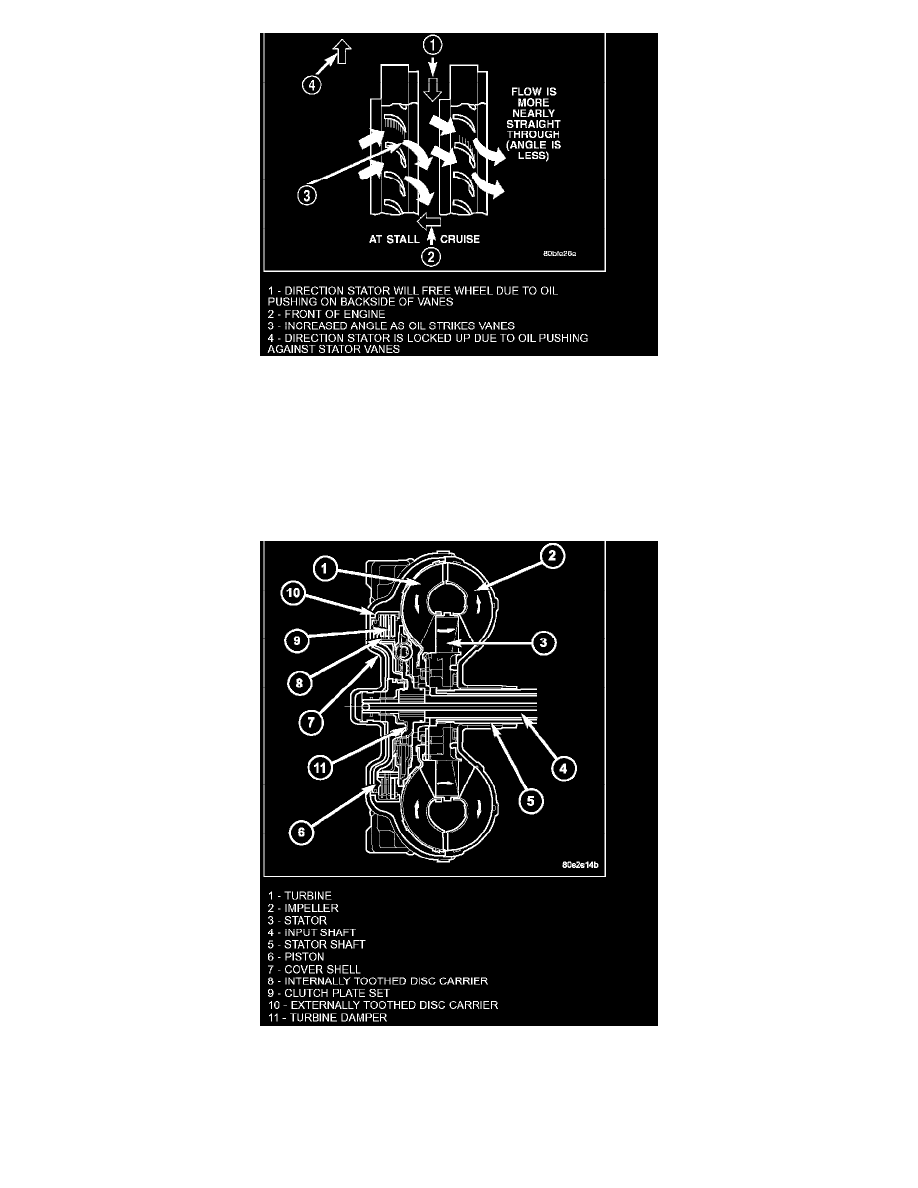Charger V6-3.5L VIN G (2006)

Torque multiplication is achieved by locking the stators over-running clutch to its shaft. Under stall conditions (the turbine is stationary), the oil
leaving the turbine blades strikes the face of the stator blades and tries to rotate them in a counterclockwise direction. When this happens the
over-running clutch of the stator locks and holds the stator from rotating. With the stator locked, the oil strikes the stator blades and is redirected into a
helping direction before it enters the impeller. This circulation of oil from impeller to turbine, turbine to stator, and stator to impeller, can produce a
maximum torque multiplication of about 2.0:1. As the turbine begins to match the speed of the impeller, the fluid that was hitting the stator in such as
way as to cause it to lock-up is no longer doing so. In this condition of operation, the stator begins to free wheel and the converter acts as a fluid
coupling.
TORQUE CONVERTER CLUTCH (TCC)
In a standard torque converter, the impeller (2) and turbine (1) are rotating at about the same speed and the stator (3) is freewheeling, providing no
torque multiplication. By applying the turbines piston and friction material (9), a total converter engagement can be obtained. The result of this
engagement is a direct 1:1 mechanical link between the engine and the transmission.
The clutch can be engaged in second, third, fourth, and fifth gear ranges.
